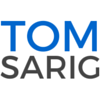One of the key factors of success for any business, and a foundational goal for anyone starting out, is branding. Your brand is intrinsic to who you are as a business, without it, consumers wouldn’t be able to distinguish your offering from the many other options and likely competition. Hence, the term brand name, in reference to things perceived as higher on the scale of quality and/or price. But, how do brands get to that level where they are considered a “brand name” as opposed to generic?
That stage is referred to by professionals as brand equity, and is an automatic, pleasant association consumers have between a business and its area of expertise and marketing intent. Brand equity comes as a result of key targeting, positioning and consistency with regard to the brand objectives. Though some may think that a brand is a color, a logo or jingle, those elements are only the byproduct, or a vehicle, rather, for the company to reach a place that is altogether different from its competitors and recognizable as a key player in its chosen sector.
Below are a few examples of some of the most effective brands right now. This blog is not an endorsement, per se, but recognition of success as a result strategic brand efforts.
- Apple:
Though the company was founded nearly 40 years ago, it did not reach its current level of fandom until more recently. Still, very early on the company was careful to distinguish itself aesthetically, whether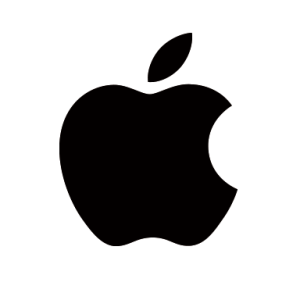 through colored iMacs with handles or white laptops instead of black ones, Apple presented itself as non traditional and futuristic–two very meaningful factors with tech geeks. Today, every facet of the company’s product is immediately recognized and associated with those themes as well as an idea of simplicity, which can be seen its pioneering of grid-like applications and keyboardless cell phones. Furthermore, the vertical integration of its products and services, including its unique chargers and music service, iTunes, has reinforced the company as special and original. Apple makes even those without tech experience feel technologically adept and a part of an exclusive community.
through colored iMacs with handles or white laptops instead of black ones, Apple presented itself as non traditional and futuristic–two very meaningful factors with tech geeks. Today, every facet of the company’s product is immediately recognized and associated with those themes as well as an idea of simplicity, which can be seen its pioneering of grid-like applications and keyboardless cell phones. Furthermore, the vertical integration of its products and services, including its unique chargers and music service, iTunes, has reinforced the company as special and original. Apple makes even those without tech experience feel technologically adept and a part of an exclusive community. - Whole Foods:
Whole Foods has revolutionized grocery shopping. Capitalizing on the popularity of organic, natural food crazes, the company has effectively positioned itself as the healthiest option for food or as it calls itself “America’s Healthiest Grocery Store.” The company has done this by creatin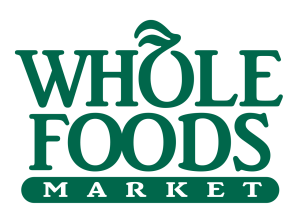 g experiences like cooking classes, providing online recipes, and appealing to a more savvy, educated, wealthy, and health conscious clientele. Most importantly, though, the company openly and adamantly distinguished itself from “unhealthy” or bad foods sold by other retailers, that they refused to put on the shelves of their store. Whole Foods appealed to the emotions of its audience by creating a brand of care and concern for health, not just a place for products. In doing so, it has built a legion of loyal customers willing to pay top price for what they perceive as a necessary option with regard to health.
g experiences like cooking classes, providing online recipes, and appealing to a more savvy, educated, wealthy, and health conscious clientele. Most importantly, though, the company openly and adamantly distinguished itself from “unhealthy” or bad foods sold by other retailers, that they refused to put on the shelves of their store. Whole Foods appealed to the emotions of its audience by creating a brand of care and concern for health, not just a place for products. In doing so, it has built a legion of loyal customers willing to pay top price for what they perceive as a necessary option with regard to health. - Starbucks:
Likewise, Starbucks’s brand, with regard to equity and perceived quality, is one of the most enviable in the country. With its signature cafes, unique names for cup sizes (like, tall, grande and venti), and social responsibility efforts, Starbucks has created more of a culture than a consumer base. Its customers prefer its products to other options, despite the number of substitutes elsewhere. In New York City, fo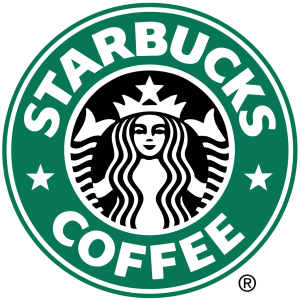 r example, one can get coffee at practically every corner deli or at a number of cafes and franchise locations, like Starbucks’s competitor, Dunkin Donuts. Still, customers are loyal to Starbucks, finding the company superior in comparison to other options, based solely on positioning. Its emphasis on baristas and strategic customer service-centered approach hasn’t been duplicated by larger chains, even if its product could be. Additionally, the company has worked to further dominate the space by placing its products, like its signature frappuccino, coffee beans and mugs, in stores outside of its ubiquitous cafes.
r example, one can get coffee at practically every corner deli or at a number of cafes and franchise locations, like Starbucks’s competitor, Dunkin Donuts. Still, customers are loyal to Starbucks, finding the company superior in comparison to other options, based solely on positioning. Its emphasis on baristas and strategic customer service-centered approach hasn’t been duplicated by larger chains, even if its product could be. Additionally, the company has worked to further dominate the space by placing its products, like its signature frappuccino, coffee beans and mugs, in stores outside of its ubiquitous cafes. - Google:
When a noun becomes a verb, its efforts in branding have paid off. That has become the case with Google, which has, in just under 20 years, become the most popular website on the Worldwide Web. By eliminating bells, whistles, and widgets like news, weather, horoscopes, etc., Google positioned itself more simply than its competitors and made clear that its product was for conductin g searches. With lightening fast speeds and advanced algorithms, the company provided rapid results for key searches that became a hit with consumers. Presently, the company is associated relevance, accuracy, and knowledge. Accompanying products like Google Maps and Google Drive have become equally popular and perpetuate the idea of the company as a one-stop shop for all things people want and need. None of its competitors have been able to master and simplify the wealth of information on the internet in the way Google has. Indeed, none of its competitors have become a verb.
g searches. With lightening fast speeds and advanced algorithms, the company provided rapid results for key searches that became a hit with consumers. Presently, the company is associated relevance, accuracy, and knowledge. Accompanying products like Google Maps and Google Drive have become equally popular and perpetuate the idea of the company as a one-stop shop for all things people want and need. None of its competitors have been able to master and simplify the wealth of information on the internet in the way Google has. Indeed, none of its competitors have become a verb. - Yelp:
Yelp was not the first company to bring the most effective form of marketing (word of mouth) online, but it has become the most trusted source among consumers in its few years in existence. The company did so by focusing on local businesses, with whom consumers were more likely to engage and search. Understanding the value of the i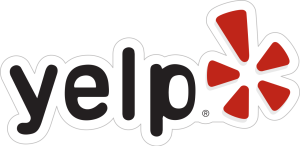 nternet, the company basically digitized the Yellow Pages and added a highly personalized review component to its listings. Additionally, the company focused on content marketing and built partnerships with businesses and users, hosting parties and sending out themed newsletters, including high-rated neighborhood businesses for users to checkout, stating, “We Know Just The Place.” As a result of its trustworthiness and resourcefulness, Apple has sourced the company’s data to recommend to users through Siri, and Google frequently ranks its reviews at the top of search results, despite being in competition with the company.
nternet, the company basically digitized the Yellow Pages and added a highly personalized review component to its listings. Additionally, the company focused on content marketing and built partnerships with businesses and users, hosting parties and sending out themed newsletters, including high-rated neighborhood businesses for users to checkout, stating, “We Know Just The Place.” As a result of its trustworthiness and resourcefulness, Apple has sourced the company’s data to recommend to users through Siri, and Google frequently ranks its reviews at the top of search results, despite being in competition with the company.
These are just a couple examples. There are many others, including well known, older, global brands like Nike, Coca Cola, and GE, which fellow marketing blogger, Big Girl Branding, lists and gives key points. For small businesses or individuals marketing themselves, it’s important to know that each of these companies started out as just an idea, and through effective branding and marketing efforts, built an empire. Your brand is everything you are as a company. Without it, your service or product is invisible. Learn everything you can, invest in the right areas, and be consistent.
